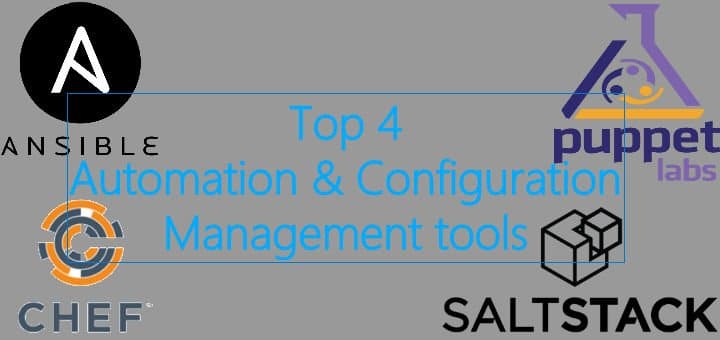With rise of Devops culture & cloud technology, companies are adopting automation or configuration management tools at a very fast pace. Defining automation can be a bit tricky & its definition changes as per the field its employed on but one thing can be certainly said that it refers to doing the work with no or minimal human intervention.
With the use of these tools, we can configure & manage a number of servers/systems simultaneously, these can also be helpful in avoiding configuration related issues as well. In this article, we will discuss top 5 automation or configuration management tools that are currently being employed by IT organizations.
-
Puppet
Puppet is one of the most powerful configuration management/automation tool, built to be cross-platform & supports Unix, Linux, Mac and Windows operating systems. It is used for deploying, configuring & administering servers in IT environment. We can nay & every task from provisioning resources to a server to completely dismantling it. Puppet is written in Ruby & Ruby DSL (Domain Specific Language) for creating and management of the modules.
Puppet uses server, client model with server as Master & agents are installed on all the client system that will be managed by Puppet. Agents, after being configured, communicate with server to get the configurations, which are then applied on the client systems by puppet agents.
-
Chef
Chef is an another good automation/configuration management tool that is also written in Ruby & along with Erlang. Along with deploying, configuring & maintaining servers on the company premises, it can be used on the cloud as well. Chef can integrate with all the leading cloud platforms like AWS, Azure, Google cloud etc. It runs in server/client mode but can be used in a standalone mode, known as ‘chef-solo’. It supports Linux as well as Windows operating systems.
Chef uses modules known as recipes to transform infrastructure into code, recipes are configuration files that are written is Ruby. A collection of recipes is collected into a CookBook, one cookbook contain only a single task but it can have a number of server configurations. Chef server acts as central repository for cookbooks & where chef clients checks in with the server, the recipes are then sent to these nodes which completes the operation defined in recipes.
-
Salt stack
Slatstack is a configuration management & remote execution tool, that allows to run commands on various machines in parallel by using its remote execution capabilities. & with its server client model used by configuration management functionality, we can easily & securely deploy, configure the IT resources. Although Salt is written in Python, it can run scripts written in Python as well as scripts that are written in YAML or JSON as well.
Salt works in similar manner as to puppet or chef i.e. there are one or more master issuing commands to multiple agents, called minions; minions then execute the task. Salt provides real time connections with as many as serves as needed using encrypted Zeromq connections, which makes saltstack much faster than its competition. Salt can also issue commands over ssh but with ssh performance can take a hit.
-
Ansible
Ansible is an open source software automation platform & as mentioned above, used for configuration management, application deployments. Main reason for popularity of Ansible & its appealing nature to system admins, is it’s simplicity. It is based on a very simple configuration language called YAML, which is very easy to learn & understand. On the other hand, other automation like Chef & puppet are based on the RUBY, which is a little hard to learn.
Also one major advantage of using Ansible is that it’s an agent-less deployment, that means that you don’t need to install an agent on every system that you want to manage, like puppet or chef that requires an agent to run on every client system. Ansible only requires Python & ssh to be installed on client systems to be manage them, both of these are usually installed by default on most of the Linux machines.
(Recommended Read : Create your first Ansible server setup, Introduction to Ansible commands )
This list was created based on the popularity & adoption rate of the softwares in the industry. There are many other options to consider like CFengine, Rudder, Juju etc and we will try to discuss them in our future articles. Also, we will soon be sharing the installation and configuration part for each of the mentioned tools soon, so stay tuned & spread the word.
If you think we have helped you or just want to support us, please consider these :-
Connect to us: Facebook | Twitter | Google Plus
Become a Supporter - Donate us some of you hard earned money: [paypal-donation]
Linux TechLab is thankful for your continued support.
